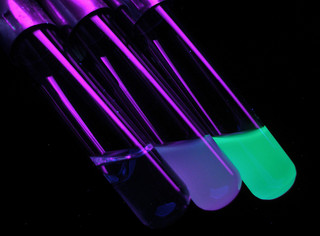Question:
What precipitation techniques are used for concentration and clean up?
The Protein Man Says:
Protein Precipitation is the process in which protein is separated from any extra contaminants that may be mixed with it. It is an important part of downstream processing and can be done with a variety of different techniques. While there are a number of different methods of precipitation, the two most popular ones are Salt Induced Precipitation (“Salting Out”) with ammonium sulfate or Isoeletric Precipitation with trichloroacetic acid.
 Salt Induced Precipitation with Ammonium Sulfate
Salt Induced Precipitation with Ammonium Sulfate
The process of “salting out” a protein can occur with a number of different types of neutral salts, but ammonium sulfate is by far the most common. With salting out, the protein interacts with the salt as opposed to the water, which leads to less interaction between the water and the protein’s solvation layer, which in turn leads to more hydrophobic patches being exposed and to encourage those patches to interact with one another. This leads the proteins to precipitate.
Ammonium Sulfate is the preferred salt because it is high on the Hofmeister series and has a high solubility rate. It can either be added to the protein solution, or the solution can be poured onto a measured amount of ammonium sulfate. The process takes about a half hour to an hour before the mixture is sent to the centrifuge.
Isoeletric Precipitation with Trichloroacetic Acid
Precipitation can be achieved by varying the pH of the medium. At low pH's, proteins have a net positive charge because the amide gains an extra proton. At high pH's, they have a net negative charge due to the carboxyl on the protein backbone losing its proton. At their pI value, a protein has no net charge. This leads to reduced solubility because the protein is unable to interact with the medium and will then fall out of solution.
Trichloroacetic Acid (TCA) is commonly used for precipitation because it sees great results with a relatively low concentration (typically around ~15%). Using TCA exposes even more of the proteins hydrophobic structure, resulting in increased precipitation, but runs a very high risk of leaving the remaining protein nonfunctional. Because of this, TCA is generally only used when an active protein isn’t needed, like with a mass spectrometry analysis. In addition, because you are using an acid, extra steps need to be taken once the precipitation process has been completed, namely adding a base or washing off the remaining protein with acetone.
Organic solvents, such as acetone, are also used for protein precipitation, often in conjunction with TCA. The organic solvents decrease the dielectric constant of an organic solvent resulting in a loss of solubility and therefore precipitation.
Image By: Kitkor






